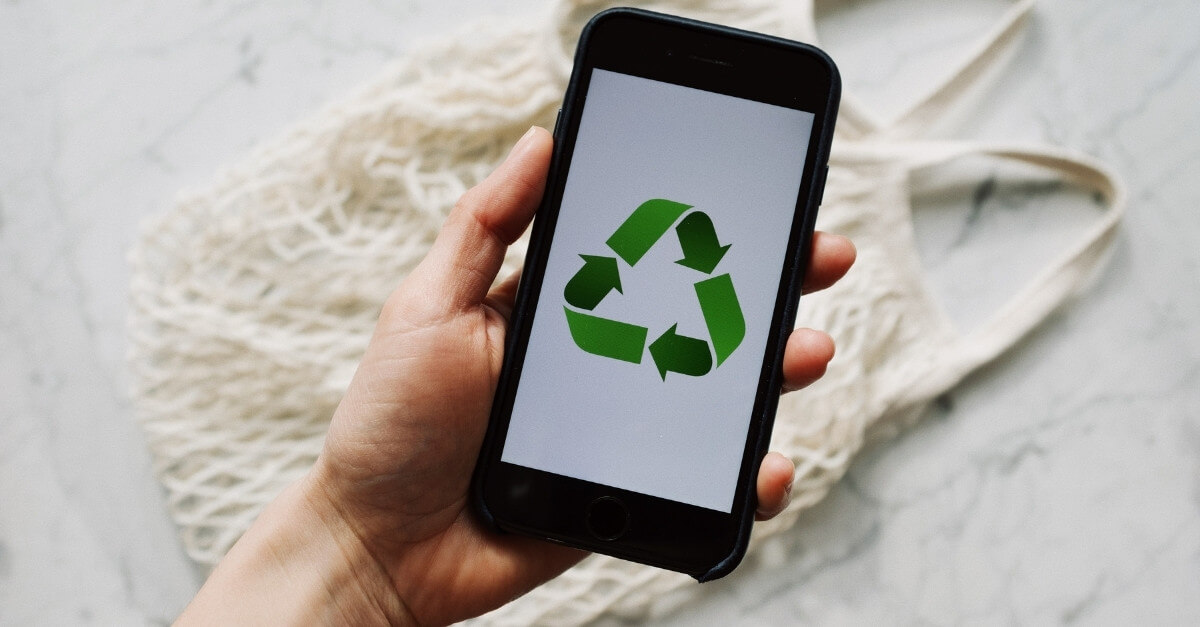
Mobile recycling refers to the recycling or refurbishing of cell phones, a growing industry at the moment. Experts estimate its current market size to be $2.3 billion, which is expected to increase by 1.7% by the end of the year. The increase in market size is an optimistic prediction because there is a dire need for action in light of the rising e-waste amid a climate crisis.
The good news is that several e-waste recycling organizations, like CompuCycle, have expanded operations to cater to the need. A few new businesses have also entered the industry to further the cause and improve the overall recycling percentage in the industry.

We specialize in recycling and refurbishing all electronics, but cellphones, or mobile shredding, make up for a significant portion of our operations. This blog will explain how we manage the shredding process and what we do with the remaining materials.
Essential Steps for the Shredding Process
CompuCycle follows a systematic approach to managing the recycling and refurbishing of all electronics it comes across. Mobile recycling is critical because there is extensive personal data within the device, and our teams need to make sure none of it remains accessible.
Below are the steps we follow for the mobile shredding process to ensure it is secure, effective, and complete.
1. Equipment Inventory
Our first step is to create an inventory of your equipment. We cater to individual and corporate orders, so we must be prepared for whichever scenario we are presented with.
Individual orders do not require inventory since they mostly require dealing with a few units. However, corporate orders tend to be more extensive, and it is always better to cross-check numbers and device numbers to ensure we have everything we need.
Once we have the assurance, we move the equipment to the next team for data removal.
2. Secure Data Destruction
Data destruction is one of our fortes, and we take pride in our ability to keep our customers protected against theft. We have three primary ways to secure data destruction and deploy them based on their suitability with the electronic in question.
- Degaussing
- Crushing
- Disintegration
You can learn more about these terms on another blog we wrote recently to answer questions about the process.
Once the data has been wiped as much as possible, we move the electronic to the hardware destruction or refurbishing stage.

Materials we Gain after Shredding Completion
Cellphones are intricate devices with several metals and non-metals used for their manufacturing. Hence, shredding gives us access to diverse raw materials. Following are the most common items we collect from the recycling process:
- Ferrous metals (steel)
- Non-Ferrous metals (aluminum, copper),
- Printed circuit boards, and
- Plastics
These elements are highly demanded because their recycled versions are much cheaper than non-recycled ones.
Final Thoughts
Overall, CompuCycle has a detailed process for mobile shredding, and we use it to provide safe data destruction and electronics recycling services to all our clients. Don’t hesitate to contact us to learn more about our services or ask questions about our processes.
Our teams are available for help and will respond as soon as possible.
Recent Articles
Secure Electronics Disposal in Houston: Why the City’s Largest Industries Trust CompuCycle
When a major healthcare system decommissions thousands of laptops, or an oil and gas company retires an entire data center, one question comes up again and again: What happens to all that data — and…
Read MoreCompuCycle Executives Join R2 TAC and e-Stewards Leadership Council to Advance ITAD Standards
Houston-based ITAD provider deepens its industry influence through active participation in standard-setting committees. As corporate ITAD needs evolve alongside stricter compliance and ESG requirements, CompuCycle continues to lead the way—this time by contributing directly to…
Read MoreI’m Just a Computer: A Journey Through ITAD Recycling
Meet Chip the Computer – he’s about to take you on an unforgettable journey through the world of IT Asset Disposition (ITAD). Buckle up for an adventure that’s both educational and entertaining! Chapter 1: “Hello,…
Read MoreIs There a Wrong Way to Recycle Electronics?
Most people agree that recycling electronics is the right thing to do. It prevents hazardous waste from entering landfills, supports sustainability goals, and allows for the recovery of valuable materials. But what many businesses don’t…
Read More


